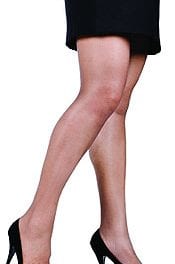It is claimed that teardrop-shaped implants look more natural than round implants. However, even plastic surgeons and nurses cannot tell the difference between the final outcomes of patients with similar characteristics, suggesting that their use may not be justified.
“A widespread idea is that the anatomically shaped implants give more natural results than the round implants,” write Dr. Carlos Rubi of The IMED Hospital Department of Plastic Surgery, Valencia, Spain, and coauthors, in a study published recently in Plastic and Reconstructive Surgery.
In their study, 30 plastic surgeons and plastic surgery nurses reviewed preoperative and postoperative photos of 30 women who had undergone breast augmentation with round or anatomically shaped implants. The two groups of women were similar: all procedures were done using silicone implants, placed under the muscle (subpectoral), with an average implant size of about 300 cc.
For each set of photos, the surgeons and nurses judged whether the procedure was done using round or shaped implants. The goal was to determine if the aesthetic results of round versus shaped implants could be differentiated from each other, explains a media release from Wolters Kluwer Health.
For all observations, there was about a 50-50 chance that the surgeons and nurses could correctly identify the type of implant used. There was a lack of agreement not only between different raters, but also for individual raters comparing the same images several weeks later.
Plastic surgeons performed slightly better than nurses in identifying the type of implant—possibly because they could deduce which type would likely be recommended, based on the “before” photos.
The inability to tell the difference between implant types for breast augmentation questions the preference for shaped implants—especially since they cost more and carry a risk of complications related to implant rotation, compared to round implants, the release continues.
“The systematic use of anatomically shaped implants is not justified,” Rubi comments in the release. “Natural results are achieved with both types of implants.”
[Source(s): Wolters Kluwer Health, Science Daily]



This study reflects the fact that any fluid filled object when subjected to compression will form a sphere–as in nature.
Evaluation of implants outside of the body does not take into account that submuscular implants are under compression. Subcutaneous implants are also under some compression but much less and are presumably more likely to assume their manufactured shapes–in theory.
JBFisherMD Yorba Linda, CA 92886